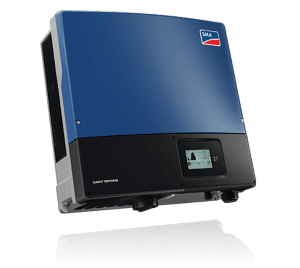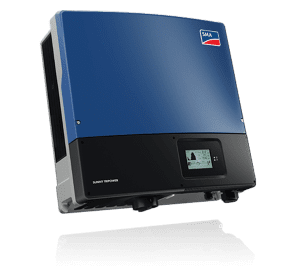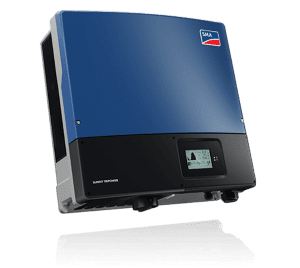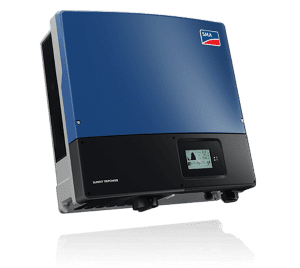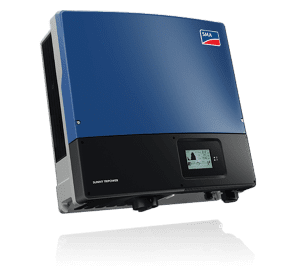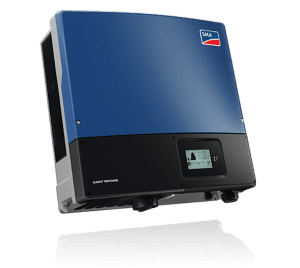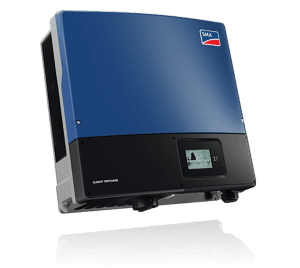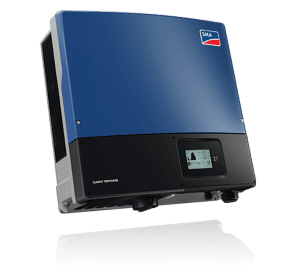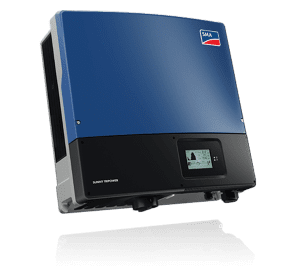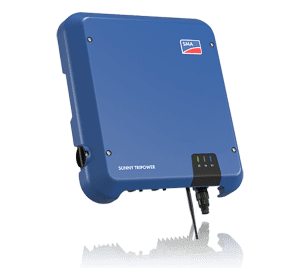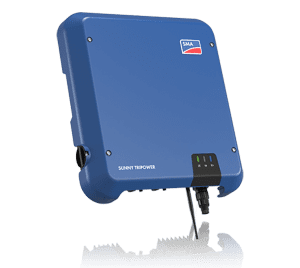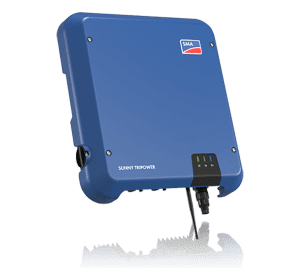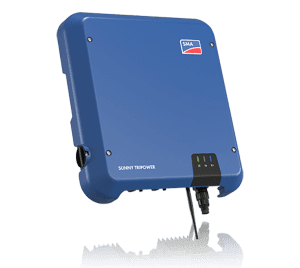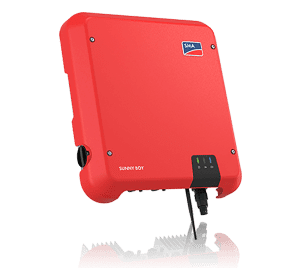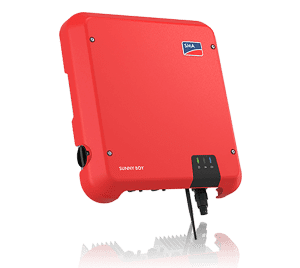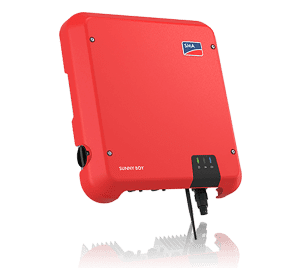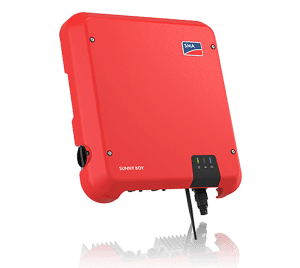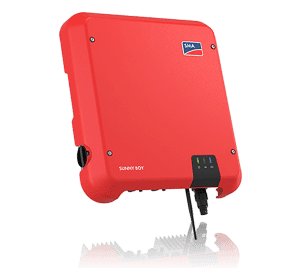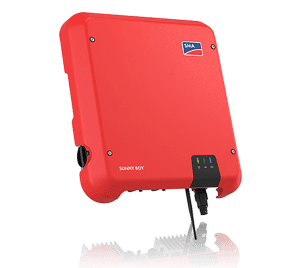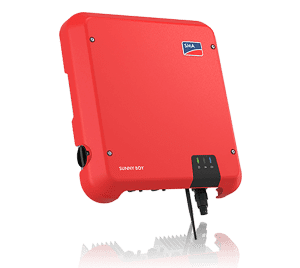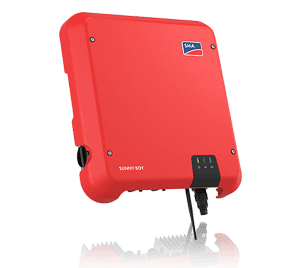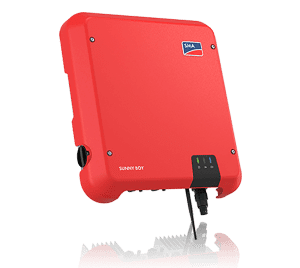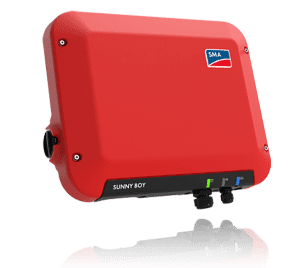On Grid SMA Inverter
solar inverter Sunny Boy – SB 5.0-1 AV
solar inverter Sunny Boy – SB 4.0-1 AV
solar inverter Sunny Boy – SB 3.6-1 AV
solar inverter Sunny Boy – SB 3.0-1 AV
solar inverter Sunny Boy – SB 6-1 AV-41
solar inverter Sunny Boy – SB 5-1 AV-41
solar inverter Sunny Boy – SB 4-1 AV-41
solar inverter Sunny Boy – SB 3.6-1 AV-41
solar inverter Sunny Boy – SB 3.0-1 AV-41
solar inverter Sunny Boy – SB 2.5-1VL -40
SMA Sunny Boy Review
An SMA inverter costs less than other grid-tied inverters, but it only works if you build your system in full sunlight and face all the panels in the same direction. To know more about the SMA inverter price, browse our website. The Sunny Boy is our ideal option if you don’t require panel-level power optimization.
SMA has long been considered one of the most reliable string inverter manufacturers in the solar industry. In this article, we’ll review the SMA Sunny Boy, our pick for the best inverter for “standard” grid-tied solar systems.
The SMA inverter shines in systems that won’t be affected by shading, panel orientation, or other concerns that would affect the output of your panels.
It’s not the most versatile high-tech inverter out there. But if you are building a standard fixed-mount system that will absorb full sunlight all year, the Sunny Boy gives you a bigger ROI than any other on-grid inverter available. You can check the on-grid solar inverters Dubai price by browsing the Pas Solar website.
Sunny Boy SMA inverter Prices
SMA offers a range of Sunny Boy models from 3 kW to 7.7 kW for residential grid-connected systems. If you think the prices are not reasonable enough, there is always the option to get an SMA inverter for sale.
Ideal application for the SMA Sunny Boy
It is important to understand the limitations of string inverters to help decide if they are the right choice for your project.
A panel string is a group of panels that are connected to a single input on the inverter. Because the panels are wired in series, the output of each panel in the chain is tied together.
If a panel suffers a drop in production, all panels in the chain are reduced to match the production of the weakest panel. Panel strings are connected in series. The drop in production of a panel affects the entire chain.
You can have a string of 330W panels, but if a single panel in the string drops to 250W output, each panel in that string will produce 250W of power. That’s an 800W production loss on a 10-panel string, almost a 25% production loss.
For this reason, the SMA inverter only makes sense when you can build your panels in a location that is fully exposed to sunlight throughout the year. If trees, chimneys, or other obstructions cast a shadow on a panel, it will cripple a string’s output, affecting your entire system.
It’s also not ideal if your panels are facing in different directions, for example, if you need to spread them across an unusually shaped ceiling. Panels work best when facing directly toward the sun (ideally facing the equator, meaning a south-facing array is ideal for systems built in Dubai).
If some panels in a string face south and others face east, the panels facing east will produce less power because they are not pointed directly at the sun. The entire chain will drop to coincide with the output of the panels facing east, sacrificing the additional output of those facing south.
Different strings can have different orientations, but all panels in a string must face the same direction. To mitigate these issues, you may be better off with an SMA inverter system with panel-level optimization like the SolarEdge HD-Wave or Enphase IQ7+ microinverters.
However, if you don’t need to worry about the orientation of the panels or shades, Sunny Boy systems are extremely reliable and efficient at a price that is 15-25% lower than alternative options. It’s the best value you can find in an inverter, assuming you meet these ideal building requirements. If you live in Dubai, browse our website to learn the SMA inverter price in Dubai.
Advantages of the SMA Sunny Boy
The SMA inverter is the most cost-effective grid-tied inverter you can buy, as long as your system meets a few criteria:
Panels face the same direction
Large enough to meet minimum string size requirements (at least 4-6 panels, depending on the panel and inverter models you choose)
Let’s compare two systems that would produce 906 kWh per month, enough to offset the national average energy use for homes in Dubai.
If you want to buy SMA inverter, you should know that the Sunny Boy system costs nearly $1,600 less than the HD-Wave. You can save a lot of money if your system is built in full sunlight, and you don’t need the power optimizers that are included in the HD-Wave system. For more information, refer to the SMA inverter price list on the Pas Solar website, which is an official solar equipment shop in Dubai.
Safe power supply
A unique feature of SMA inverters is the Safe Power Supply (SPS). The SPS provides a backup power source in case of emergencies.
If the power goes out, you can connect to the SPS, a 2000-watt power source that draws backup power from your panels even if the grid is down. This is a good backup mechanism for powering critical devices during a power outage.
One caveat is that your panels must be exposed to sunlight and producing power for this to work, as SPS draws electricity in real-time from the panels for this feature to work. At night or during heavy storms, the SPS is not a reliable substitute for a fully equipped grid-connected system with energy storage.
Optimizers are optional
The SolarEdge HD-Wave comes with mandatory power optimizers; the system will not work without them. With the Sunny Boy, optimizers are an optional add-on. This gives you the flexibility to start with the base Sunny Boy package and then upgrade the optimizers in the panels if you feel they are needed.
For example, your system may be fully exposed to sunlight in the summer, but then you find that your house casts a long shadow in the winter and covers part of your array. You can go back and add optimizers to the shaded panels to bring your production back up to par.
However, there is a tradeoff. When you add optimizers, the Sunny Boy loses its role as a safe power supply. This is a design bug that we wish to see fixed in future models.
Excellent customer service
SMA inverter has the best customer service in the market. Their customer-oriented technical team is knowledgeable and has excellent response times via phone and email. They also produce detailed product documentation to help people install, program, and troubleshoot their computers.
As a dealer, we have found them to be fair and responsive in working with us to troubleshoot defective equipment and process return claims.
In an ideal world, great support should be standard, but unfortunately, that’s not always the case. Some solar manufacturers don’t even offer direct customer support, instead forcing the dealer to mediate technical issues and return claims. Not SMA though – their support team is one of the most approachable and competent in the business.
Cons of the SMA solar inverter
System Design Limitations
As mentioned above, the Sunny Boy works best if all strings of panels are facing the same direction, and you can build your array in full sunlight. Failure to meet these requirements will result in drastically reduced production, and the Sunny Boy will no longer be the most profitable option.
While the SMA inverter shines in its wheelhouse, it’s not the most versatile inverter on the market. The SolarEdge HD-Wave has more features and tends to be the best option when you need power optimization at the panel level.
Quick shutdown limitations
The latest electrical codes (NEC 2017) require rapid shutdown of photovoltaic systems installed in buildings.
For Sunny Boy systems, that requires adding optimizers, which means you lose the SPS feature and cost advantage over other inverters. A Sunny Boy with optimizers goes for about the same price as a SolarEdge HD-Wave system. Browse our website to find out the SMA solar inverter price and buy an SMA inverter for your home. You can also check our solar inverters price list and compare different brands.
Quick shutdown requirements only apply in certain areas and only when the system is installed in a building. Roof-mount systems often need optimizers to function, but in many cases, floor-mount systems do not need those.
More difficult to install
The Sunny Boy is larger and heavier than other inverters, which makes them a bit more difficult to install, especially for a DIYer working alone. The largest Sunny Boy models weigh 57 pounds. They can be quite unwieldy when trying to lift and mount the SMA inverter to the wall. For more information, check out the SMA inverter spec sheet.
SMA inverter warranty
The standard 10-year warranty is shorter than the 12-year warranty on HD-Wave and much shorter than the 25-year warranty on Enphase IQ7+ microinverters. You should expect to replace your Sunny Boy at least once, and possibly twice, during the life of your system. At Pas Solar, we can offer you all the top brands, such as the Sungrow solar inverter.
SMA offers an extended warranty plan that allows you to extend the product warranty up to 20 years. Whether you purchase the extended warranty in advance or replace the inverter out of pocket later, you will incur some additional costs for a replacement at some point. Those costs should be factored into your system’s lifetime cost of ownership.


